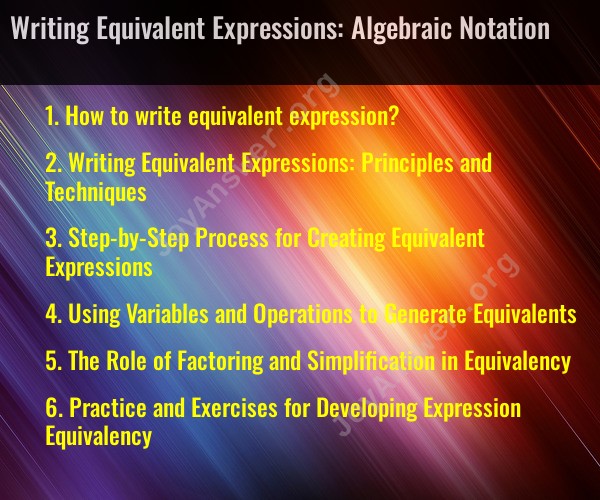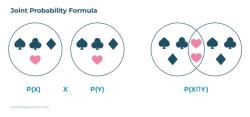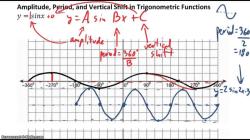How to write equivalent expression?
To write equivalent expressions in algebra, you need to manipulate algebraic expressions using various properties and rules without changing their overall value. Equivalent expressions are different ways of representing the same mathematical relationship. Here are some common techniques for writing equivalent expressions:
Use the Commutative Property:
- The commutative property allows you to change the order of addition or multiplication without changing the result. For addition and multiplication, it looks like this:
- a + b = b + a
- a * b = b * a
- The commutative property allows you to change the order of addition or multiplication without changing the result. For addition and multiplication, it looks like this:
Use the Associative Property:
- The associative property allows you to change the grouping of numbers without changing the result. For addition and multiplication, it looks like this:
- (a + b) + c = a + (b + c)
- (a * b) * c = a * (b * c)
- The associative property allows you to change the grouping of numbers without changing the result. For addition and multiplication, it looks like this:
Use the Distributive Property:
- The distributive property allows you to distribute a factor across the terms inside parentheses. For example:
- a * (b + c) = a * b + a * c
- The distributive property allows you to distribute a factor across the terms inside parentheses. For example:
Combine Like Terms:
- Combine like terms by adding or subtracting them. Like terms have the same variable and exponent. For example:
- 3x + 2x = 5x
- 2y - y = y
- Combine like terms by adding or subtracting them. Like terms have the same variable and exponent. For example:
Factor Expressions:
- Factor out common factors from terms. For example:
- 2x + 4x = 2x(1 + 2) = 2x(3) = 6x
- Factor out common factors from terms. For example:
Use the Zero Property:
- Anything multiplied by 0 is 0, and anything added to 0 remains the same. For example:
- a * 0 = 0
- b + 0 = b
- Anything multiplied by 0 is 0, and anything added to 0 remains the same. For example:
Use the Identity Property:
- For addition, the identity element is 0, and for multiplication, it is 1. Adding 0 or multiplying by 1 doesn't change the value. For example:
- a + 0 = a
- b * 1 = b
- For addition, the identity element is 0, and for multiplication, it is 1. Adding 0 or multiplying by 1 doesn't change the value. For example:
Use Exponent Rules:
- Apply rules for exponents to simplify expressions with powers. For example:
- a^m * a^n = a^(m + n)
- (a^m)^n = a^(m * n)
- Apply rules for exponents to simplify expressions with powers. For example:
Simplify Rational Expressions:
- Simplify fractions and rational expressions by canceling common factors in the numerator and denominator.
Use Substitution:
- Substitute variables or expressions with equivalent values. For example, if you have a = 2, you can substitute a with 2 in an expression.
Practice and experience are key to becoming proficient in writing equivalent expressions in algebra. It involves applying these properties and rules to manipulate expressions while maintaining their equivalence or equality.
Writing Equivalent Expressions: Principles and Techniques
Equivalent expressions are expressions that have the same value. There are a number of principles and techniques that can be used to write equivalent expressions.
Principles of Equivalent Expressions
- Commutativity: The order in which numbers are added or multiplied does not affect the result.
- Associativity: The order in which numbers are grouped for addition or multiplication does not affect the result.
- Distributive property: The product of a number and a sum is equal to the sum of the products of the number and each of the terms in the sum.
Techniques for Writing Equivalent Expressions
- Combining like terms: Like terms are terms that have the same variables and exponents. Like terms can be combined by adding or subtracting their coefficients.
- Factoring: Factoring is a process of breaking down an expression into smaller, more manageable parts. Factoring can be used to simplify expressions and to create equivalent expressions.
- Simplification: Simplification is the process of rewriting an expression in its most concise form. Simplification can be done by using the principles of commutativity, associativity, and the distributive property.
Step-by-Step Process for Creating Equivalent Expressions
To create equivalent expressions, you can follow these steps:
- Identify the like terms in the expression.
- Combine the like terms by adding or subtracting their coefficients.
- Factor the expression, if possible.
- Simplify the expression.
Using Variables and Operations to Generate Equivalents
Variables and operations can be used to generate equivalent expressions in a number of ways. For example, you can:
- Add or subtract the same number to both sides of an equation.
- Multiply or divide both sides of an equation by the same non-zero number.
- Substitute one expression for another, as long as they are equivalent.
- Use the properties of commutativity, associativity, and the distributive property to rearrange the terms in an expression.
The Role of Factoring and Simplification in Equivalency
Factoring and simplification play important roles in writing equivalent expressions. Factoring can be used to simplify expressions and to create equivalent expressions. Simplification can be done to make expressions more concise and easier to understand.
Practice and Exercises for Developing Expression Equivalency
The best way to develop your skills in writing equivalent expressions is to practice. Here are some exercises you can try:
- Start by writing down some simple expressions and then try to write equivalent expressions for them.
- Use the principles and techniques discussed above to help you generate equivalent expressions.
- Try to find different ways to write the same equivalent expression.
- Challenge yourself by trying to write equivalent expressions for more complex expressions.
By practicing writing equivalent expressions, you will develop a better understanding of how to manipulate expressions and how to solve equations.










